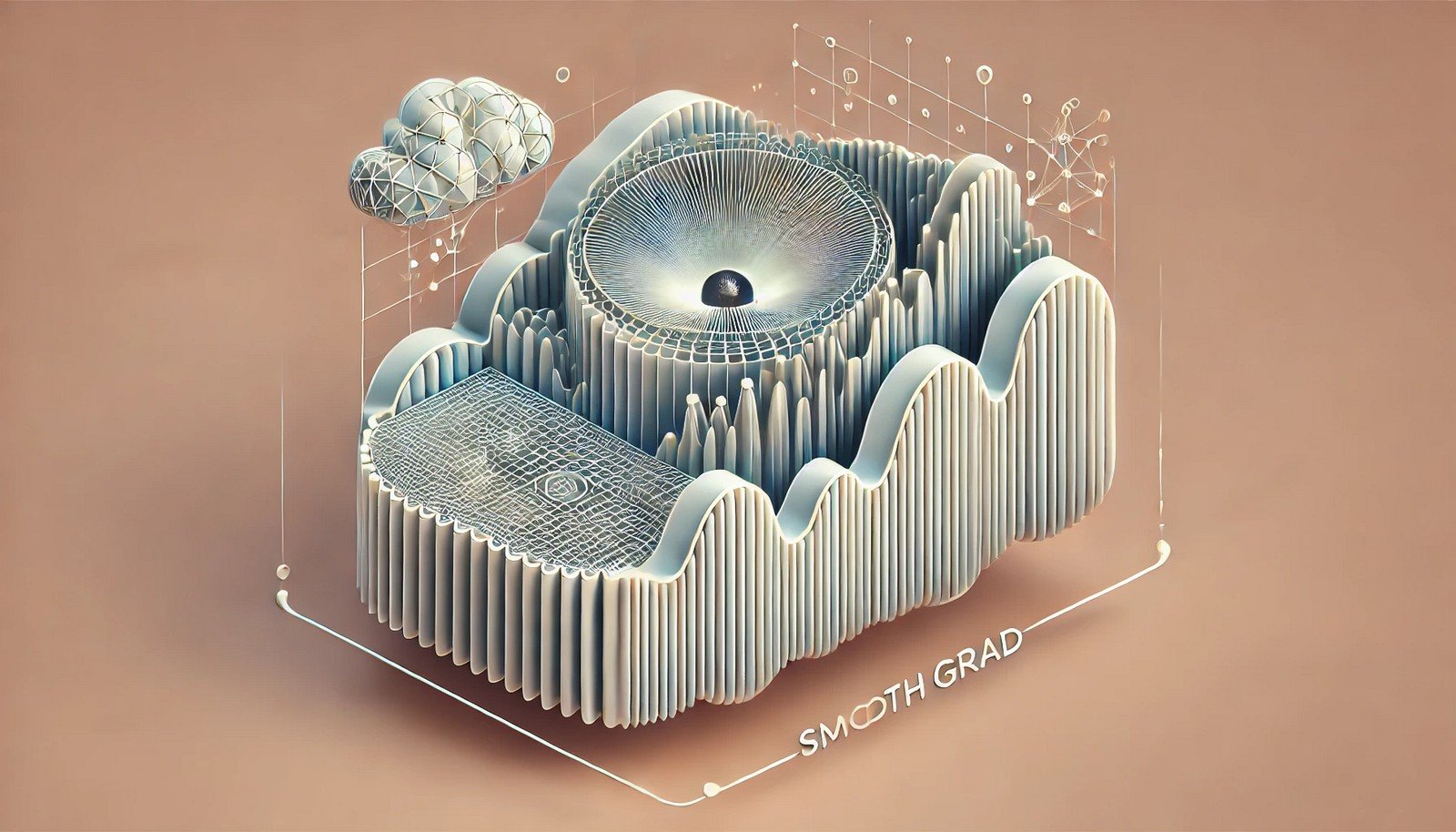SmoothGrad

Quick Navigation:
- SmoothGrad Definition
- SmoothGrad Explained Easy
- SmoothGrad Origin
- SmoothGrad Etymology
- SmoothGrad Usage Trends
- SmoothGrad Usage
- SmoothGrad Examples in Context
- SmoothGrad FAQ
- SmoothGrad Related Words
SmoothGrad Definition
SmoothGrad is a technique developed to enhance the interpretability of neural networks by reducing the noise in gradient-based visualizations. By averaging the gradients across multiple, slightly perturbed input instances, SmoothGrad provides clearer visual explanations, which help identify which parts of the input most influence the model's predictions. It's particularly useful in image recognition and other tasks requiring high transparency in decision-making.
SmoothGrad Explained Easy
Imagine drawing a picture by connecting dots, but your hand shakes a little each time. SmoothGrad is like stabilizing your hand by drawing multiple times and averaging the results to get a clearer picture. This technique helps the AI figure out which parts of an image are most important without getting distracted by random noise.
SmoothGrad Origin
SmoothGrad originated from research into enhancing neural network transparency. It gained attention in AI interpretability studies as researchers sought better ways to visualize and trust neural network outputs, particularly in complex models with millions of parameters.
SmoothGrad Etymology
The term "SmoothGrad" comes from the goal of "smoothing" gradients to enhance the clarity of model interpretations.
SmoothGrad Usage Trends
In recent years, SmoothGrad has become widely adopted in research and applications where interpretability is critical. Fields such as healthcare, autonomous driving, and legal AI applications use SmoothGrad to provide more trustworthy model explanations, ensuring users can visualize and understand the factors influencing AI decisions.
SmoothGrad Usage
- Formal/Technical Tagging:
- Machine Learning Interpretability
- Explainable AI (XAI)
- Neural Network Visualization - Typical Collocations:
- "SmoothGrad technique"
- "gradient smoothing in neural networks"
- "enhanced AI interpretability with SmoothGrad"
SmoothGrad Examples in Context
- SmoothGrad is used to highlight the specific areas in a medical scan that a neural network focuses on when identifying potential tumors.
- In autonomous driving, SmoothGrad helps visualize the features in road images that are critical to the vehicle’s decision-making, enhancing transparency.
- AI researchers apply SmoothGrad in legal applications to ensure transparency when neural networks make critical legal assessments.
SmoothGrad FAQ
- What is SmoothGrad?
SmoothGrad is a technique to reduce noise in AI visualizations by averaging gradients across perturbed input instances. - Why is SmoothGrad important?
It helps in understanding AI decisions by clarifying which input features influence model predictions the most. - How does SmoothGrad work?
SmoothGrad adds slight noise to inputs multiple times, computes gradients, and averages them for a clearer visualization. - Where is SmoothGrad used?
In fields requiring AI transparency, such as healthcare, autonomous driving, and explainable legal AI. - Does SmoothGrad work with all neural networks?
It’s mostly used in image and gradient-based models but can be adapted to others requiring interpretability. - What is the main advantage of SmoothGrad?
It reduces noise in interpretations, making feature importance clearer. - Who developed SmoothGrad?
SmoothGrad was introduced by researchers focused on AI transparency. - Can SmoothGrad improve model accuracy?
No, it doesn’t affect accuracy; it only improves interpretability. - Is SmoothGrad computationally expensive?
It can be more intensive due to multiple gradient computations but is manageable with modern GPUs. - How does SmoothGrad compare to similar techniques?
SmoothGrad is known for simplicity and effectiveness compared to other noise-reduction methods.
SmoothGrad Related Words
- Categories/Topics:
- Explainable AI
- Neural Network Interpretation
- Gradient Visualization Techniques
Did you know?
SmoothGrad was inspired by a need to make "black-box" neural networks more understandable. By averaging noise-injected inputs, researchers found they could highlight features influencing decisions more accurately, benefiting fields like healthcare and finance, where transparency is vital.
PicDictionary.com is an online dictionary in pictures. If you have questions or suggestions, please reach out to us on WhatsApp or Twitter.Authors | Arjun Vishnu | @ArjunAndVishnu

I am Vishnu. I like AI, Linux, Single Board Computers, and Cloud Computing. I create the web & video content, and I also write for popular websites.
My younger brother, Arjun handles image & video editing. Together, we run a YouTube Channel that's focused on reviewing gadgets and explaining technology.



Comments powered by CComment